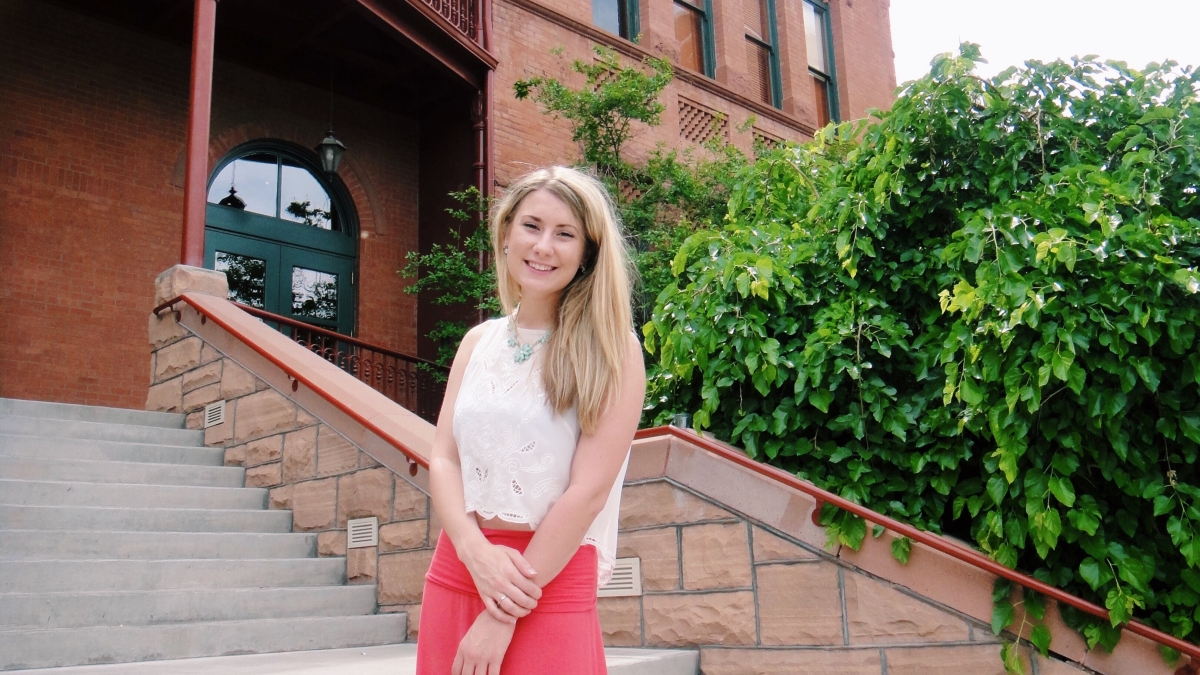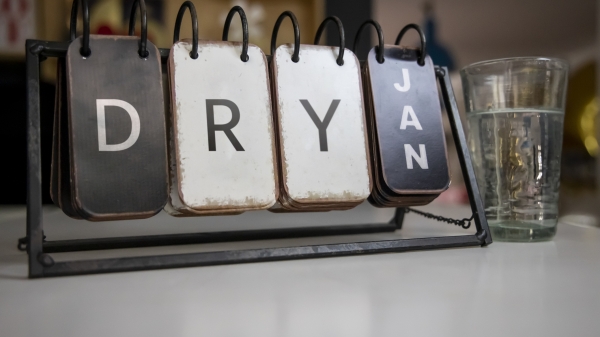A study aimed at a more healthy world

Carlyn Harris traveled to six countries to research societal and cultural influences on antibiotic consumption and resistance.
How do you go about formulating a public health information campaign that addresses the global problem of misuse of antibiotics?
You design an international research project and travel the world to ask people about their ideas pertaining to antibiotics.
That’s exactly what Carlyn Harris, a Barrett, The Honors College senior majoring in microbiology and global health did. She turned her research into her honors thesis and will present her findings at the Celebrating Honors Symposium of Theses and Creative Projects beginning at 4 p.m. on Wednesday, April 12, at the Barrett Tempe complex.
Harris will be among more than 170 honors students who are presenting their theses or creative projects at the symposium, a Barrett Honors College signature event for more than 15 years. The honors college requires that students complete a thesis or creative project in order to graduate ASU with honors.
In 2015, Harris won the Circumnavigators Club Grant worth about $9,000 and traveled that summer to Guatemala, Spain, the Netherlands, India, South Africa and New Zealand to research societal and cultural influences on antibiotic consumption and resistance. She conducted 75-question, agree/disagree surveys with laypersons about antibiotic use. In addition to questions about the use of antibiotics, interaction with doctors and pharmacists, and general public health knowledge, respondents were asked about the frequency of their “risky” antibiotic behaviors, such as whether they had saved antibiotics for later use, or if they had borrowed antibiotics from friends or family. Her aim was to assess sociocultural ties to public health knowledge of antibiotic resistance and consumption and use that information to develop new educational initiatives and awareness campaigns.
Harris also did a comparison of low-income versus high-income countries, as well as low antibiotic consumption versus high antibiotic consumption countries to evaluate differences. She looked for a correlation between public health knowledge and risky antibiotic use behavior. She found that the behavior of respondents from low income countries differs significantly from that of respondents from high income countries.
“Respondents from low income countries were more likely to place more trust in pharmacists than respondents from high income countries. Additionally, respondents from low income countries were more likely to think that an antibiotic was needed for fever, paleness, pus, coughs, and rashes,” Harris said.
She also found that higher antibiotic public health knowledge and higher cultural competence correlated with lower “risky” antibiotic behavior.
And what country showed evidence of better public health knowledge? According to Harris, respondents from the Netherlands had the greatest average public health knowledge and lowest average antibiotic risk score, while respondents from India had the lowest average public health knowledge and highest average antibiotic risk score.
“Being from a higher income country was correlated with lower risk and higher public health knowledge about antibiotics,” Harris said.
Harris said it is important to study antibiotic use because some 700,000 people worldwide die from antibiotic resistant infections.
“Currently there are knowledge gaps around the world regarding what antibiotic resistance is, what causes it, and how we can prevent it. In order to create effective education campaigns, local context and culture must be taken into account. We must understand regional differences in order to create targeted educational campaigns,” she said.
“Aside from mortality, resistance leads to longer illness duration, increasing treatment costs, and inability to perform procedures that rely on antibiotics to prevent infection,” she added.
Peggy Nelson, Barrett vice dean, said students conduct research and creative projects under the tutelage of one or more faculty members and that completing a thesis or creative project helps propel honors students into work in their chosen fields.
But it’s not easy. Students must face the same rigor and review of their research as any university researcher, she added.
Students whose research involves human subjects, including interviews, surveys, measurements, and testing, must submit a plan to ASU’s Institutional Review Board, Nelson said. The faculty members who help direct student research and members of the IRB work closely with students to ensure they successfully complete the review process.
“This directed mentoring starts students on the path toward becoming professionals in their fields. Many (students) note the tremendous advantage having completed a thesis gives them in acquiring jobs and entry into graduate and professional school. It also contributes to their success in obtaining nationally competed scholarships,” Nelson said.
Harris admitted that the thesis process was challenging, but felt it was worth it.
“While time consuming and a lot of hard work, I think completing a thesis was extremely beneficial. It allowed me to thoroughly explore a topic I love and forced me to critically think about why this really matters and how my research could contribute to the future of antibiotic resistance. While it's a small piece of the very large puzzle, writing my thesis and doing the background literature review has shown me where my ideas fit and where the gaps still lie,” she said.
As Harris looks back on her thesis work and her undergraduate honors experience, she also looks forward to spending a gap year and then preparing to pursue a master’s in public health and eventually medical school.
“Without Barrett, I would never have had the opportunity to apply for the Circumnavigator's Club Grant. But more than that, Barrett provided me with a community of motivated, ambitious, and enthusiastic peers and faculty who want to make a difference in the world. Combining that amazing energy with the endless opportunities, ASU pushed me to pursue every opportunity. Without that, I wouldn't have circled the globe,” she said.
More Health and medicine

ASU teams up with Maricopa County to address local life expectancy gap
Arizona State University’s College of Health Solutions is partnering with the Maricopa County Board of Supervisors to address a…

ASU professor named Rural Health Fellow
If you live in a major city, chances are you don’t spend much time thinking about what happens in smaller towns and rural areas.…

The rise of NoLo: Many young people opting to reduce alcohol consumption
This month, the U.S. surgeon general released a new advisory on the link between alcohol and cancer risk.The advisory includes a…